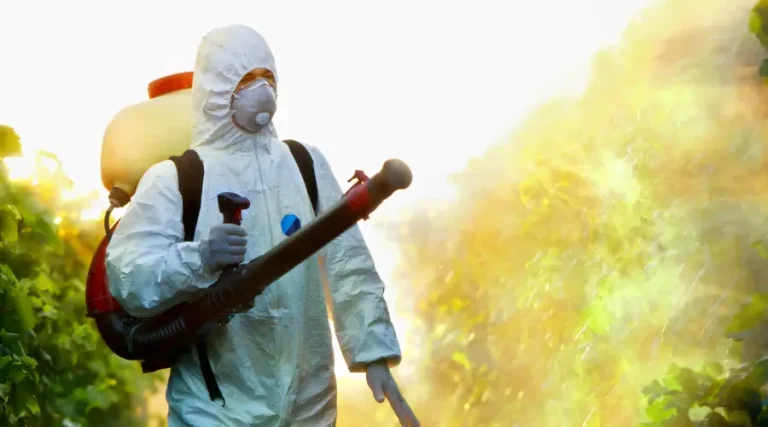Pests are more than a nuisance—they are disease vectors capable of jeopardizing public health. Effective pest control ensures a safer environment, reduces disease transmission risks, and fosters healthier communities. Let’s explore how pest management is integral to public health and learn actionable tips to protect yourself and your loved ones.
Key Takeaways:
- Pest control protects public health by mitigating disease risks from pests like mosquitoes, rodents, and cockroaches.
- Effective pest control prevents the spread of vector-borne illnesses, allergies, and contamination.
- Adopting safe, preventive measures ensures long-term health benefits and environmental safety.
What is the Role of Pest Control in Protecting Public Health?
Maintaining public health requires effective pest management by managing pest populations that pose significant health risks. Mosquitoes transmit malaria and dengue, rodents spread hantavirus, and cockroaches can trigger asthma. Controlling these pests protects individuals and communities from potentially life-threatening diseases.
Understanding the Connection Between Pest Control and Public Health
Pest control is not just about eliminating unwanted creatures; it is a vital public health service. Left unchecked, pests such as mosquitoes, rats, and cockroaches can become disease vectors, contaminating food, water, and living spaces. By reducing pest populations and implementing preventive measures, pest control helps:
- Decrease disease transmission risks.
- Maintain hygienic living conditions.
- Protect vulnerable populations, such as children and the elderly, from pest-related illnesses.
Why Is It Important to Control Pests?
Unchecked pest infestations can lead to:
- Disease Transmission: Pests like mosquitoes and rodents are vectors for malaria, dengue, and leptospirosis.
- Food Contamination: Cockroaches and rodents can contaminate food with bacteria, causing foodborne illnesses.
- Structural Damage: Termites and rats can damage homes, schools, and workplaces, compromising safety.
- Allergies and Asthma: Exposure to pest allergens from cockroaches and dust mites triggers respiratory issues.
Regular pest control helps mitigate these risks, ensuring healthier living environments.
How Pests Transmit Diseases
1. Mosquitoes: Responsible for malaria, dengue, and Zika virus transmission, mosquitoes are the most common vectors for deadly diseases.
2. Rodents: Rats and mice spread hantavirus and leptospirosis through urine, droppings, and bites.
3. Cockroaches: These pests contaminate food, spread pathogens, and trigger asthma with droppings and saliva.
Pest control methods directly address these threats, breaking the chain of disease transmission.
8 Tips for Safely Controlling Pests and Protecting Your Health
1. Seal Entry Points: Prevent pests by closing gaps in windows, doors, and walls.
2. Maintain Cleanliness: Regularly clean food preparation areas and remove garbage promptly.
3. Use Proper Storage: Store food in sealed containers to deter rodents and insects.
4. Eliminate Standing Water: Prevent mosquito breeding by draining water from pots, gutters, and unused containers.
5. Use Safe Pest Control Products: Opt for eco-friendly repellents and traps to minimize health risks.
6. Regular Inspections: Schedule periodic pest inspections to detect and address infestations early.
7. Promote Natural Predators: Encourage birds or beneficial insects that prey on pests.
8. Educate Your Household: Teach family members about pest prevention strategies for collective effort.
FAQ
Q: How do pests affect public health?
A: Pests can carry diseases, contaminate food and water, and trigger allergies or asthma, posing significant public health risks.
Q: Is pest control safe for children and pets?
A: Yes, pest control can be safe for households with children and pets when using eco-friendly products and professional services that follow safety guidelines.
Q: How often should pest control be done?
A: Frequency depends on factors like location and pest type. Routine inspections every 3-6 months are recommended.
Q: Can DIY methods replace professional pest control?
A: While DIY methods can address minor issues, professional pest control is essential for severe or recurring infestations.
Q: Are eco-friendly pest control options effective?
A: Many eco-friendly solutions effectively manage pests without harming the environment or human health.
Conclusion
Pest control is an indispensable aspect of public health, protecting us from diseases, allergies, and other risks associated with pests. By understanding the health implications of pests and adopting safe control methods, we can create a healthier, pest-free environment. Prioritize pest control today to safeguard your family and community.
Are you looking for professional pest control services? Contact us to ensure your home and workplace remain safe, healthy, and pest-free.

